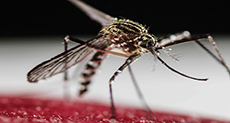Irradiated Mosquitoes to Zap Zika’s Power

Local Editor
A laboratory on the outskirts of Vienna is literally buzzing with armies of male mosquitoes locked up inside net-covered boxes. Their sole mission in life is to stop females from breeding.

Better known for keeping a close watch on countries' nuclear activities, the International Atomic Energy Agency [IAEA] joined the fight against Aedes aegypti, the notorious mosquito responsible for spreading dengue, chikungunya and now the Zika virus.
Meanwhile, experts from around the globe are working strenuously in the IAEA's tightly-secured research facility in Seibersdorf, 30 kilometers south of the Austrian capital, to perfect something called the sterile insect technique, or SIT.
The clue is in the name: male mosquitoes exposed to a radioactive source before being released into nature to mate with wild females, which, as a result, will lay infertile eggs. The aim is to gradually reduce, if not suppress, their population.
Director of the IAEA's insect pest control unit, Jorge Hendrichs, described the method as it is "basically family planning for insects," which already proved successful in eradicating several pests, including the tsetse fly in Zanzibar and the fruit fly in most of northern Mexico.
In a large foyer, several trays on a table contain either wriggling larvae or hard-shelled pupae; the stage when the mosquitoes get irradiated.
Another room has a row of shelves stacked with whirring cages. Small signs reveal their occupants' country of origin: Brazil, Indonesia, and Thailand.
Countries may be itching to wipe out the bloodthirsty creatures, but several obstacles remain.
One of the key challenges is how to separate their genders before irradiation.
Source: News Agencies, Edited by website team
Comments
- Related News

Jellyfish Swarm Shuts Down French Nuclear Plant
2 months ago
Young Europeans Losing Faith in Democracy!
4 months ago

